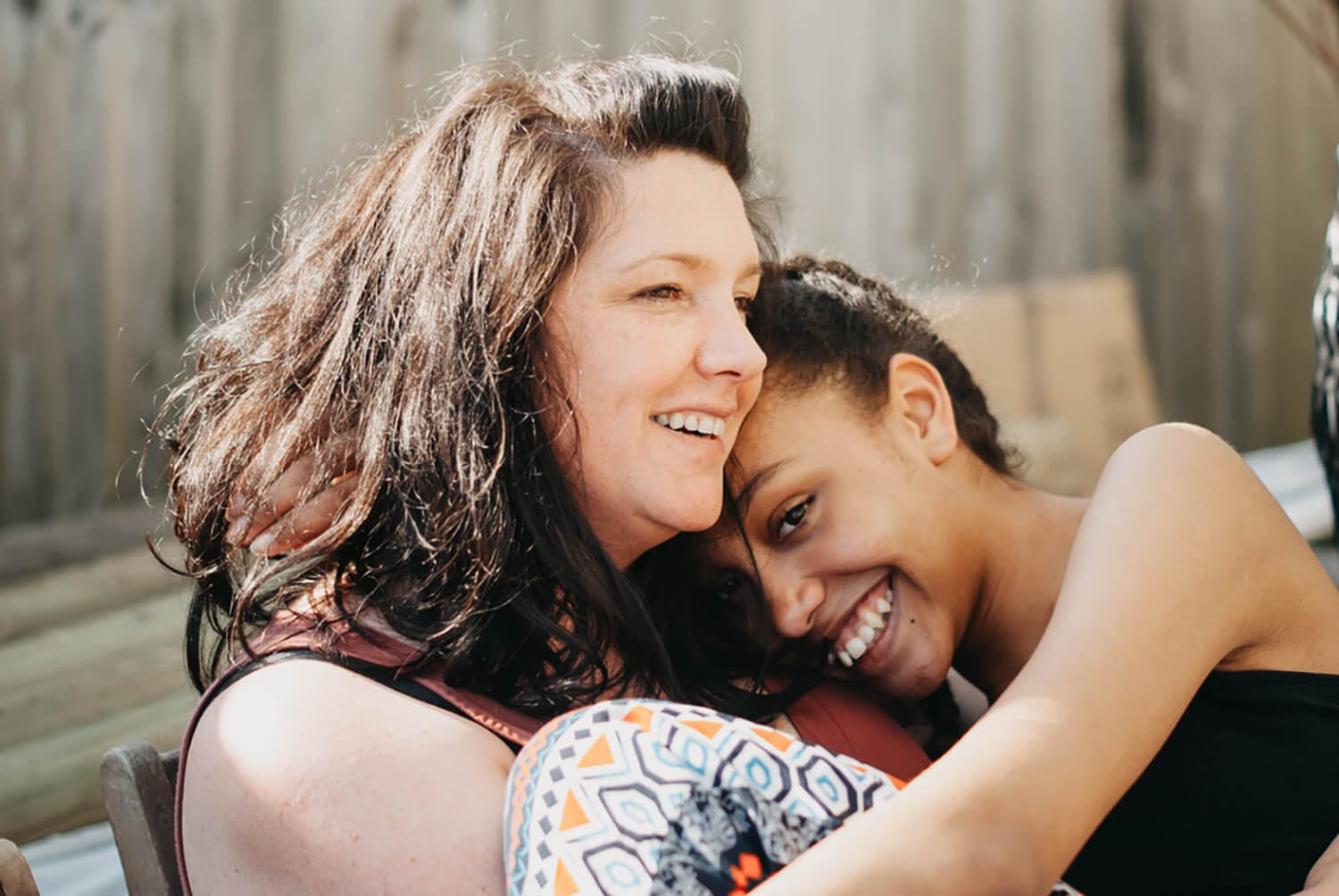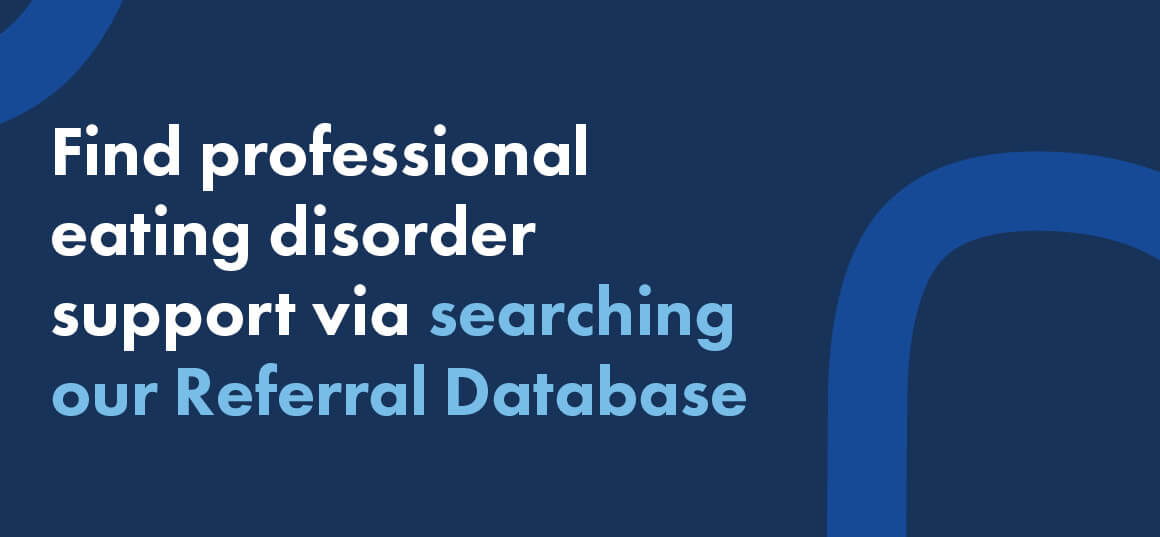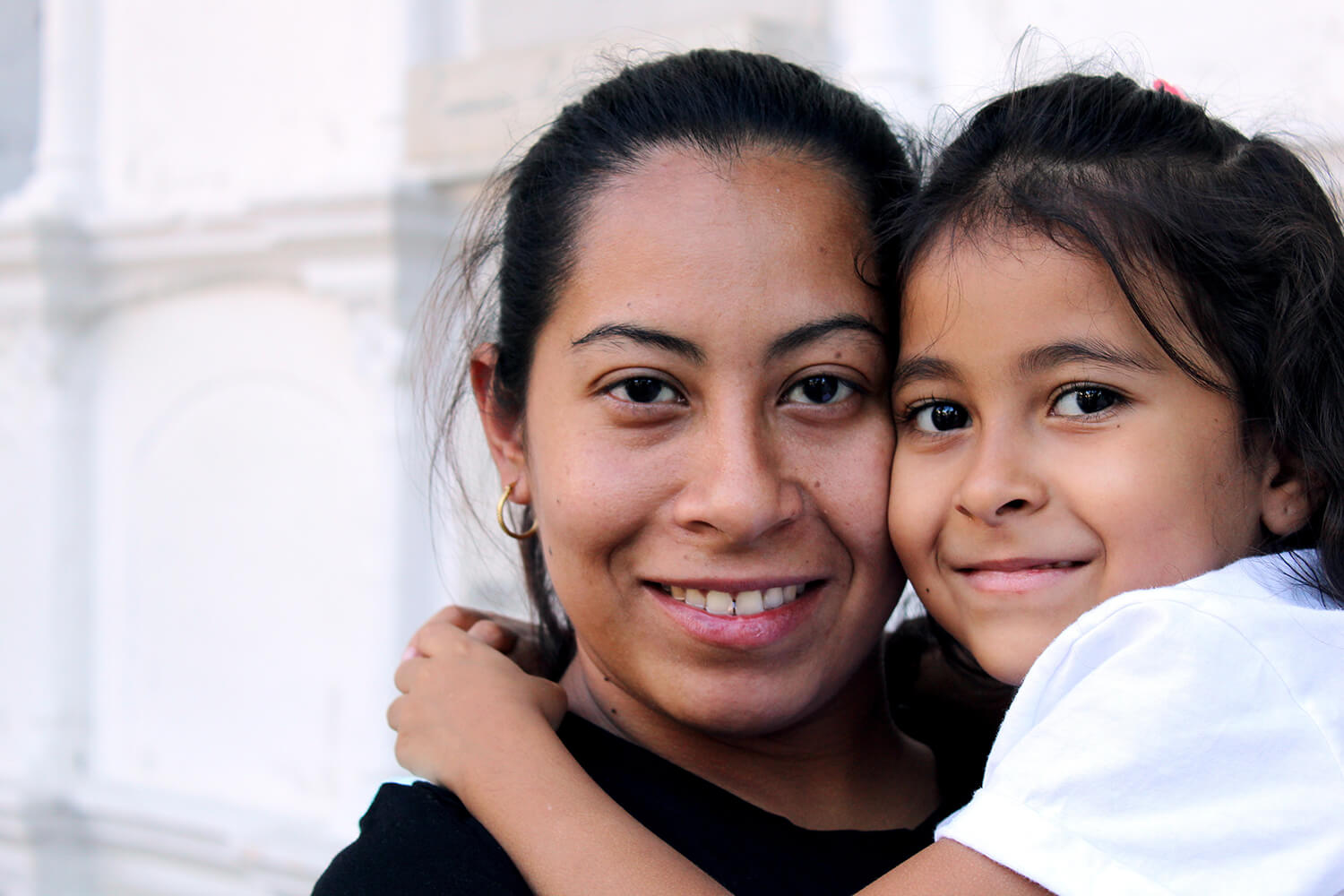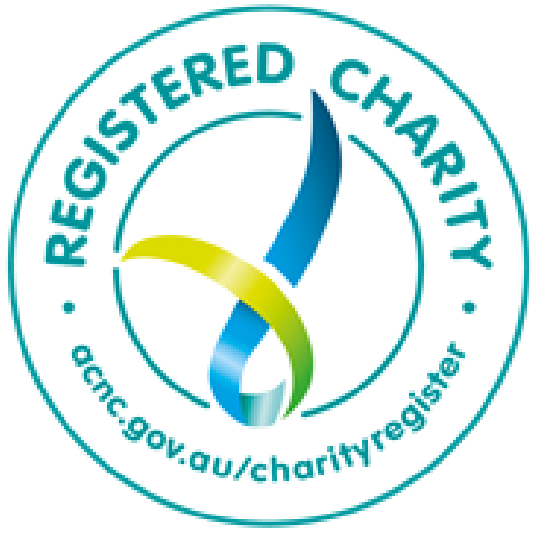Eating disorders – not what you think
What do you think of when you hear the words “eating disorder”? Chances are, they’re not what you think.
This episode is being released for Mental Health Month 2020. With the diverse ways in which eating disorders can occur—along with the many unhelpful myths about them—we’ve gone back to basics. We talk to Rupert about how his disorder evolved, to Astrid about what she learned about herself, to Christine about caring for a daughter whose illness progressed rapidly, and to psychologist Beth Shelton, who also directs the National Eating Disorders Collaboration.
Eating disorders are hugely under diagnosed, yet they can have serious consequences for both a person’s physical and mental health. Understanding the basics are key to diagnosis, treatment, care and recovery. Let’s talk.
Episode 5: Eating Disorders – not what you think
Sam:
I’m Sam Ikin, and this is the Butterfly podcast. From your friends at Butterfly, Australia’s national voice for body image issues and eating disorders. This episode’s being released in October of 2020, which is also known as Mental Health Month, and with eating disorders being the complex mental health issues that they are, we’re going to go back to the basics. Exactly what are eating disorders? You’re about to find out that they’re not what you think they are. You also probably know quite a few myths about them. We’re going to set them straight as well.
Beth:
An eating disorder is an entrenched pattern of disordered eating, and sort of thinking and feeling about body image and shape and weight and about yourself.
Christine:
You’re told, “I’m sorry to say that your daughter’s got anorexia nervosa. It has the highest mortality of any mental illness. There’s a 20% chance of mortality.” That is a huge thing to take on.
Rupert:
It happened quickly. Yeah. I lost a lot of weight very quickly, and I got put on a feeding tube. I had friends and that type of thing, and they just didn’t get it. It was so hard. They didn’t understand what was going on, and I didn’t really want to tell him because I was embarrassed about it.
Astrid:
I’m literally starving myself, and the body will try to make up for that as much as it can. So, then I’d find myself bingeing again and back into that cycle.
Amelia:
People might eat things that aren’t considered food. For example, they might eat things like dirt or chalk, soap, for example.
Sam:
Everyone who experiences an eating disorder has a unique story to tell. Over a million Australians are currently experiencing one right now and less than a quarter are getting treatment or support. It’s becoming increasingly clear that eating disorders are hugely underdiagnosed. After months of lockdown and uncertainty, frontline workers are reporting that things are getting worse.
Amelia:
We’ve had quite a significant surge in our calls, and we’ve also had an extremely significant surge in our web chat contacts as well. So not exclusively, but often, young people do tend to lean towards contacting us online. So, through our live chat service; that has increased significantly and exponentially as well, and it keeps going up, and a lot of those coming from Victoria in particular.
Sam:
I should mention that as we record this, Victoria is still in a state of hard lockdown. If you’re thinking about reaching out at the moment, we encourage you to do so. The details about how to do that will come up later in the show, including the web chat that we just mentioned. It’s a vital tool.
Beth:
I am a psychologist. My work is working with people with eating disorders.
Sam:
That’s Dr. Beth Shelton. She, like everyone who works in the eating disorders field at the moment, is busy. We were very lucky to get her on the show.
Beth:
I’m also the director of the National Eating Disorder Collaboration.
Sam:
So, if we need anyone to explain exactly what eating disorders are, Beth is the person to do it.
Beth:
It causes a lot of mental suffering and a lot of dysfunction in life, especially around food and eating, but also in terms of social life, in terms of cognition, in terms of getting on with life and having the life that you want to have.
Sam:
Dr. Shelton has much more to say about this, but first to the myths.
Sam:
Myth number one, eating disorders are a lifestyle choice or just plain vanity. This one is straight up BS, but for someone who has no personal experience or understanding, I can see why it would seem that way. The truth is eating disorders are serious mental health conditions. They’re often associated with serious medical complications, which can affect every major organ of the body. They’re caused by genetic and personality vulnerabilities, interacting with social and environmental triggers, things like body image or body dissatisfaction. The recovery process can be long and challenging for everyone involved. To dismiss it as a lifestyle choice or some sort of vanity is not only wrong, it can be harmful.
Beth:
The eating disorder that people tend to have in their minds when they immediately think of an eating disorder is anorexia nervosa because it’s the most commonly known eating disorder, and it’s because it’s the most obvious in terms of a person’s way to check an appearance. So, in anorexia nervosa, the person has ideas and beliefs and feelings around weight and shape and the control of those things, which really overtake them, and they are kind of driven in a sense to reduce the food intake that they have.
Rupert:
I was about 13 years old. When you have these early high school relationships, I dated this girl and she broke up with me for no real apparent reason. For some reason I thought it was because I didn’t have a six-pack set of abs, and that she was after someone that was more muscular or more fit. That was just what I told myself.
Sam:
Before we go any further, I should probably introduce you to Rupert.
Rupert:
I’m a 29-year-old male living in Sydney, Australia at the moment. I work as a town planner for a local council here.
Rupert:
I suppose the logic in my head was I was doing a lot of sport at the time and particularly playing soccer. I always thought maybe if I lost a bit of weight it would help me run faster as well. I’d just like to make note that I wasn’t overweight or anything at this stage either. I was just a healthy normal weight. So yeah, I suppose that kick-started everything.
Beth:
Sometimes they’re able to mask feelings in relation to that starvation kind of response, but it also tends to make people lose a certain amount of cognitive function being underweight with a starvation response, which then kind of makes a person stuck in their cognitions. Sometimes it’s very difficult to see the big picture because the brain shuts down in certain kind of way.
Rupert:
It all happened really quickly. I started losing the weight really quickly. To get the six pack abs that I was after, I started doing sit-ups excessively. I kept playing soccer, but everyone was starting to realize, all the coaches were starting to realize. They started putting me on the bench, on the sideline. I was quite good at soccer at this stage, but obviously this really affected my performance as well. So yeah, I started getting put on the bench, wasn’t allowed to play. I remember there was one time I played a full game, and I fainted after the game because I didn’t have enough, obviously, blood sugar. My blood sugar levels were too low from just not eating enough food.
Beth:
It also tends to lead to social isolation, so the person has difficulty with being flexible enough to eat with other people and to be with other people.
Rupert:
I was 13, 14 years old, and I had friends and that type of thing, and they just didn’t get it. It was so hard. They didn’t understand what was going on. I didn’t really want to tell them because I was embarrassed about it, and people just didn’t understand. At that stage, I think I was completely over the search for the six pack abs and stuff like that. I was obviously very body conscious still, but I was just stuck in this cycle that I just couldn’t break out of.
Christine:
I’m a mom of two daughters who’ve had eating disorders.
Sam:
We’re still talking about anorexia nervosa here, and we’re going to bring in Christine Naismith. She’s another person who’s devoted her life to helping people with eating disorders after experiencing them through her own daughters.
Christine:
My daughter was in year 11, very happy, healthy, bubbly, friendly girl, lots of friends, doing well at school. It all started with the year 11 formal. The group of girls decided that they all wanted to look nice in their formal dresses, so they were going to go on a healthy eating diet and do a bit of exercise. As a mom, you think, “Okay, great. That sounds fine.” So, she was actually preparing salads to take to school for lunch. I was very proud of her taking that initiative, but it soon turns out…
Beth:
So, you get this vicious cycle in the sense of restricting food and the effects of restricting food on the brain and the body and on the social life tending to reinforce that, if that makes sense. So the person’s stuck in this pattern, and it’s hard to get out of it, because of the distress that comes from changing that rigid pattern of eating.
Christine:
She lost a little bit of weight for the formal. I thought she looked a little bit thin, but she was okay. She was with her first boyfriend at the time. They had a little bit of a tiff, and he made the casual remark, “I think we need a break.” And that was enough to spiral this insidious illness out of control. She just went from eating healthily to basically cutting out a whole food group a day and became very, very sick very, very quickly. So, it was quite terrifying to have a child that will just refusing point blank to eat anything. So yeah, the start of it was very frightening indeed. No previous history, no knowledge of an eating disorder or what anorexia was. My goodness, it is a steep learning curve and a shock. It’s just a shock to any parent.
Sam:
Now’s a good time to take another break to destroy another myth. Myth number two, eating disorders are a cry for attention or a person going through a phase. Research shows that over 50% of 12 to 17-year olds strongly agreed or agreed that a person with an eating disorder should snap out of it. There are more important things in life to worry about. Unfortunately, these types of misconceptions are not limited just to the general public. A person with an eating disorder may receive similar reactions from some health professionals.
Sam:
The truth is people with eating disorders are not seeking attention. In fact, due to the nature of an eating disorder, the person may go to great lengths to hide, disguise, or deny their behavior. Or they may not recognize that there’s anything wrong. It’s not a phase, and it won’t be resolved without treatment and support. Evidence shows that early diagnosis and intervention can greatly reduce the duration and severity of an eating disorder. So, it’s really important to seek professional help at the earliest possible time. Unfortunately, it’s not something they’ll just snap out of. If you’re concerned about yourself or someone else, jump onto Butterfly’s website to find out what to do next. I’ll put out the details at the end of the episode.
Sam:
So, after anorexia nervosa, the next most well-known eating disorder is bulimia nervosa.
Beth:
What happens in bulimia nervosa is again, the person has rigid ideas and overvalued ideas about how important weight and shape might be for them as a person and really strong desire to control weight should shape. So they do the same thing. They tend to diet or restrict their intake.
Astrid:
I really used food for comfort as a child.
Sam:
Astrid Welling is a support worker for Centacare.
Astrid:
I work specifically in the area of eating disorders for the PACE team.
Sam:
I know you told me yesterday, what, what does PACE stand for?
Astrid:
Oh, sure. It’s panic and anxiety, OCD, which is obsessive compulsive behavior and eating disorders.
Sam:
Astrid spends a lot of time helping other people find recovery from eating disorders, but she has her own story to tell.
Astrid:
I was quite an anxious child and food was my friend. So that kind of implanted fairly early on, and I think most of us can trace something back to childhood around it.
Beth:
Dietary restriction naturally creates an enormous pressure on the person to eat because we are survival organisms, aren’t we, and we want to survive. So, when the body fuels itself to be underfed, to be starving, it sends lots of signals up into the brain and into the body itself to sort of eat! Get the person to eat. So the person then breaks their restriction.
Astrid:
Then I left home and very low skill set around coping, and it kind of kicked off from there. So, I found that I was binge eating to allay my anxiety, but then my body was now 17, 18, and it wasn’t just falling off like it did at 13, 14.
Beth:
Because physiological pressure builds up and psychological pressure builds up around rules and all of that kind of thing, when they eat it’s often possible for them to eat more than they want to. Or even if they don’t, they experience then a sense that they have broken the rules and experience enormous distress sometimes around that, and fears that have to do with the need to rigidly control weight, shape, and eating. So, then the person might do an activity, what we call a compensatory activity in order to compensate for the fact that they’ve eaten. So there’s only a certain number of ways that you can do that. You can do it by vomiting, or you can do it by certain sort of substances or people think they can, although they don’t work. Or you could by excessive exercise.
Astrid:
So I started to try dieting, and I found that that gave me a level of control. So I’d lose a lot of weight, but then I’m literally starving myself. Then I’d find myself binging again and back into that cycle.
Beth:
Feeling pretty bad about the eating and then doing the compensatory behavior and then going around the cycle again. So I’ve done my exercise now. I sort of feel better. I’m back in control. I’ll restrict my intake again, but the cycle keeps repeating itself because it has physiological and emotional and motivational kinds of triggers that just keep happening.
Sam:
One thing to remember about eating disorders is that the psychology behind them is very similar, regardless of the diagnosis. It’s not uncommon for someone to swing from anorexia to bulimia or other forms of the illness.
Astrid:
I really went from, for the next 30 years, I went from anorexia to bulimia, to binge eating, orthorexia, which is that real obsession and compulsion around health and fitness.
Sam
If you’re not sure about orthorexia, we’ll get to that shortly.
Beth:
There’s a growing view in the world, actually, that eating disorders, forms of eating disorders have more in common with each other than they have separations. Because it’s often true that people might have one form of an eating disorder such as bulimia nervosa, or anorexia nervosa, but that actually changes over time.
Sam:
For Rupert, switching from one diagnosis to the other was a kind of coping mechanism.
Rupert:
My parents started to notice this, and they started to make me eat more. Obviously, I loved playing soccer and being active, but they kind of put restrictions on that, unless I was eating adequate food. Then they tried to educate me that you can’t do all this physical activity, unless you’re fueling yourself a bit better. I suppose that started the bulimia aspect as well, because my way of getting around the kind of control aspect that my parents were placing on me was to eat the food to satisfy them, but then later go to the bathroom.
Sam:
So, your eating disorder transformed from what sounded like anorexia nervosa at the start to bulimia.
Rupert:
Yeah, correct. Correct.
Beth:
Diagnoses are important in that they help the field and for people who have lived experience with an eating disorder, to identify what kind of pattern of eating it is and what kind of pattern of difficulty the person has so that we can target treatments. But there’s a lot that’s in common, underneath and underlying those eating disorders.
Sam:
We still have a few other diagnoses to get to yet, but first it’s time to blow up another myth.
Sam:
Myth number three, families, particularly parents, are to blame for eating disorders. This is a common historic misconception that family members can cause eating disorders through their interactions with the person who’s at risk. Doctors even used to point to parents as a contributing factor rather than a support resource. The truth is that there’s no evidence eating disorders can be caused by particular parenting styles. Family and friends, in fact, play a crucial role in the care, support, and recovery of people with eating disorders.
Sam:
So the next diagnosis that we have to talk about is binge eating disorder, which is the one I’ve been diagnosed with, and as more data comes in, the more it seems that I’m definitely not on my own in this one.
Beth:
More people have binge eating disorder than have anorexia or bulimia. Interestingly, binge-eating disorder is close to equal between males and females. What happens in binge eating disorder is the person doesn’t necessarily restrict their intake, although they are likely to have, most of the time, some distorted and upsetting ideas around self-worth, and weight, and shape, and needing to control those in order to feel like a good person.
Sam:
Binge eating disorder’s more than just comforting. It’s a compulsion to drastically overeat, and in my experience, there’s nothing pleasurable about it. When I binge, I feel this horrible sense of shame, and I usually try and hide from the rest of the world. I feel like a drug addict who needs to take more and more bigger and bigger hits, desperate to get that high, but the high doesn’t come, and I’m left in a puddle of shame, trying to rationalize to myself what I’ve just done.
Beth:
The typical pattern will be the person would restrict a fair bit of food during the day and not eat very much. They eat a lot of food at night would be the typical pattern, but it doesn’t have to work that way. A binge, a person eats more than would be considered a kind of normal amount of food, a fair bit more than that in a certain discrete period of time and experiences feeling really out of control in their eating. It’s a very specific kind of eating that recurs often in the person’s life, more than say three times a week.
Sam:
Astrid says she gets more calls from people with binge-eating disorder than anything else, by a long way.
Astrid:
That lack of control causes you distress and affects the way you feel about yourself. There’s no judgment around the way people eat, how much you eat. I have no judgment around it at all, but if you’re judging yourself on it and feeling less than because of it, then that’s an issue, that’s psychological distress.
Beth:
Binge-eating is quite painful for most people who have it. They often feel pretty awful afterwards, but the cycle sort of drags them in. They come around and do it again. So it’s associated with really quite serious suffering for the person. It’s much more serious than I think that anyone understood when we first started looking at this pattern of behavior.
Sam:
When people start to realize that they have a problem, they’re increasingly reaching out to the Butterfly national helpline. One of the people they might get on the phone is Amelia Trinick.
Amelia:
I’m a team leader on the national Butterfly help line for eating disorders and a clinician. I’ve been working at Butterfly for just over six years now.
Sam:
Amelia says there’s definitely been a spike in calls since the pandemic struck, and we’re starting to see more and more eating disorders that don’t fit these traditional diagnoses. But before we go into them, let’s deal with some more myths.
Sam:
Now, we’re getting towards the end of the episode, so we’re going to deal with the last three nice and quick. Myth number four, you can tell by looking at someone that they have an eating disorder. The truth is eating disorders come in all shapes and sizes. You can be considered a normal size or overweight and still have a diagnosis of an eating disorder. Myth number five, eating disorders are trivial or benign. In truth, they are not. Eating disorders are complex mental illnesses that require comprehensive and effective treatment from specialists. Myth number six, eating disorders are for life. The truth is recovery is possible. Eating disorders are treatable at every age, stage, and point in a person’s life.
Sam:
The other diagnosis we need to mention is known as Other Specified Feeding and Eating Disorders – or OSFED. People with OSFED meet quite a few of the symptoms of Anorexia, Bulimia or Binge Eating Disorders but they don’t meet all the checkpoints for a diagnosis under these disorders.
This doesn’t mean OSFED isn’t as serious – like all eating disorders it’s a serious mental illness and similarly it doesn’t’discriminate and accounts for around 30 per cent of people who are looking for treatment.
And after OSFED we have a few less common eating disorders. One that Amelia from the butterfly helpline says she says reasonably often is called ARFID.
Amelia:
It’s more commonly understood or sort of known as extremely picky eating. So, somebody who experiences ARFID might show really highly selective eating habits or just feeding patterns. It’s generally, but not exclusively diagnosed in younger people.
Beth:
It’s called ARFID. So avoidant restrictive intake disorder. ARFID is a little bit different in the person doesn’t necessarily, or probably doesn’t even have any sort of real concerns or cognitions around weight or shape or the need to control food in that sense. They may have had a traumatic kind of episode with food and swallowing, like a vomiting episode that’s kind of created almost like a phobic relationship with food. So, you might have heard of people for example, who will only eat white food, or people who will only eat carrots and broccoli, or people who will only eat junk food. So highly specific sort of preferences, and where that becomes a problem is when a person isn’t able to meet their nutritional needs because they have such rigid sort of setups.
Amelia:
We’ve also got PICA, which is an eating disorder where people might eat things that aren’t considered food. For example, they might eat things like dirt or chalk, soap, for example, and other things. It’s essentially where someone might feel a compulsion or have a compulsion in order to ease distress by eating something texturally that they might consider again, a sort of compulsion towards, but doesn’t contain a nutritional value. So that can come up for people, and often, I mean, as well as other eating disorders would often be presenting alongside another co-occurring diagnosis or presentation as well.
Sam:
Lastly, disordered eating and orthorexia. They aren’t technically eating disorders but we should mention them because many clinicians believe their warning signs, and it’s a good time to start taking action before it develops into an eating disorder.
Amelia:
We really encourage people to get support before it develops into something more serious. And that’s general disordered eating. So just that disturbed eating pattern—not even just eating pattern, but also thought pattern or thoughts and feelings about themselves or about food that might disrupt their day in a negative way. Another that floats around that’s important to mention, is orthorexia. It’s not currently recognised as an official eating disorder, but there’s this growing recognition that it might become a distinct, defined eating disorder. It essentially involves that obsession with what some people might call clean food or healthy food. There’s a real moral sort of standpoint on foods. So good food and bad food and becoming quite distressed if the food that that person is used to eating or feels morally good eating isn’t available.
Sam:
For more information on any of the diagnoses that we’ve covered in this episode go to butterfly.org.au.
Looking ahead to the next episode we will be exploring the very difficult but possible prospect of recovery from eating disorders.
Christine:
I don’t think there’s enough recovery stories out there. You just hear the doom and the gloom. It’s really important for these parents who are in the middle of it to hear the positives because they need that incentive to keep going.
Rupert:
First of all, you just got to want to get better. You’ve got to want to do it whether it be for yourself or the people you love.
Astrid:
That’s the benefit of the lived experience person, to be able to say there’s hope because it’s the hope that you lose the most of.
Amelia:
Please do reach out for support. We’ve got the most wonderful Helpline team. I cannot rave highly enough of that. On the other end of the line or the other end of the web chat or email.
Sam:
Can you throw out some details for how we can get in contact?
Amelia:
Sure. You can reach us on 1-800-33-4673. You can also email us at support@butterfly.org.au, and our website, to jump onto web chat there. It’s just butterfly.org.au.
Sam:
If you’re in Australia, that number to call again is 1-800-33-4673. That’s 1-800-ED-HOPE. The Butterfly podcast is an Ikin Media production for Butterfly Foundation. It’s written, produced, edited, and hosted by me, Sam Ikin with the assistance of Camilla Becket and Belinda Kerslake. The theme music is from Cody Martin, with additional music from Breakmaster Cylinder. Thanks to Dr. Beth Shelton, Christine Naismith, Amelia Trinick, Astrid Welling, and Rupert Luxton.




















